All Exams >
UCAT >
Abstract Reasoning for UCAT >
All Questions
All questions of Shape Patterns for UCAT Exam
Directions: you will be presented with two sets of shapes labelled “Set A” and “Set B”. You will be given a test shape and asked to decide whether the test shape belongs to Set A, Set B, or Neither.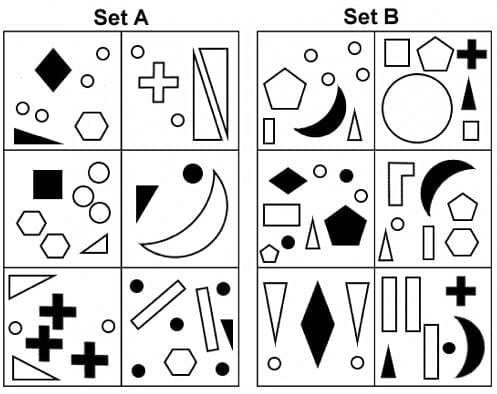 Q.
Q. 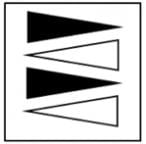
- a)Set A
- b)Set B
- c)Neither
Correct answer is option 'C'. Can you explain this answer?
Directions: you will be presented with two sets of shapes labelled “Set A” and “Set B”. You will be given a test shape and asked to decide whether the test shape belongs to Set A, Set B, or Neither.

Q. 

a)
Set A
b)
Set B
c)
Neither
|
|
Swati Sharma answered |
C – This contains four isosceles triangles, but no circle.
Pattern: Members of Set A contain at least one right-angled triangle and at least one circle; members of Set B contain at least one isosceles triangle and at least one circle.
Method: This is hard to spot, and so a process of elimination may help. There aren’t enough obviously-large shapes for Size to be a factor, nor does Orientation or Position vary in a clear pattern. Counting the number of shapes in the simplest cases (middle-right for A, bottom-left for B) enables exclusion of pure Number, whilst Colour is also easily checked and dismissed. Focussing on the shapes in these simplest cases (top- and middle-right for A, bottom-left for B) should reveal the importance of circles and triangles.
Directions: you will be presented with two sets of shapes labelled “Set A” and “Set B”. You will be given a test shape and asked to decide whether the test shape belongs to Set A, Set B, or Neither.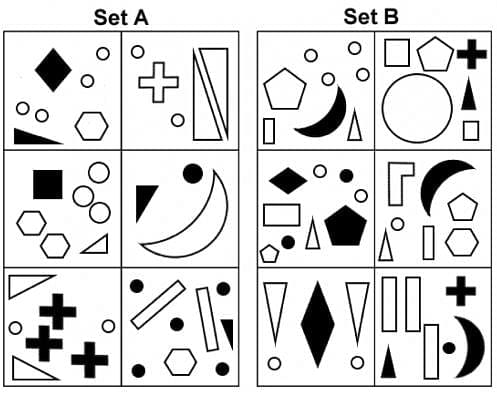 Q.
Q. 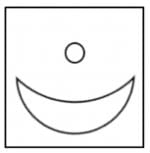
- a)Set A
- b)Set B
- c)Neither
Correct answer is option 'C'. Can you explain this answer?
Directions: you will be presented with two sets of shapes labelled “Set A” and “Set B”. You will be given a test shape and asked to decide whether the test shape belongs to Set A, Set B, or Neither.

Q. 

a)
Set A
b)
Set B
c)
Neither

|
Elite Coaching Classes answered |
Set C – This has a circle but no triangle, either right-angled or isosceles.
Pattern: Members of Set A contain at least one right-angled triangle and at least one circle; members of Set B contain at least one isosceles triangle and at least one circle.
Method: This is hard to spot, and so a process of elimination may help. There aren’t enough obviously-large shapes for Size to be a factor, nor does Orientation or Position vary in a clear pattern. Counting the number of shapes in the simplest cases (middle-right for A, bottom-left for B) enables exclusion of pure Number, whilst Colour is also easily checked and dismissed. Focussing on the shapes in these simplest cases (top- and middle-right for A, bottom-left for B) should reveal the importance of circles and triangles.
Directions: you will be presented with two sets of shapes labelled “Set A” and “Set B”. You will be given a test shape and asked to decide whether the test shape belongs to Set A, Set B, or Neither.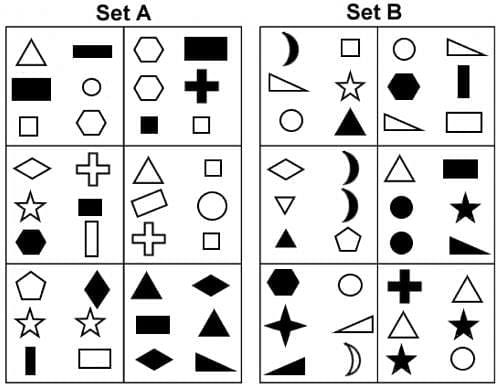 Q.
Q. 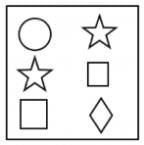
- a)Set A
- b)Set B
- c)Neither
Correct answer is option 'A'. Can you explain this answer?
Directions: you will be presented with two sets of shapes labelled “Set A” and “Set B”. You will be given a test shape and asked to decide whether the test shape belongs to Set A, Set B, or Neither.

Q. 

a)
Set A
b)
Set B
c)
Neither

|
Elite Coaching Classes answered |
Set A – This contains three quadrilaterals.
Pattern: Members of both sets contain six elements whose colour, black or white, is irrelevant. Specifically, members of Set A contain three quadrilaterals (square/rectangle/diamond), whilst members of Set B contain two triangles (right-angled or isosceles).
Method: Colour can quickly be ruled out, e.g. by looking at the middle-right and bottom-right members of Set A. Checking a few boxes for the number of sides rules out this, too. It’s hard to find “simplest” cases in each set, but comparing within the sets helps – in A, there is no single common shape amongst the members (hexagons, crosses, stars or circles), but the abundance of squares, rectangles and diamonds should become apparent; likewise for triangles in B.
Directions: you will be presented with two sets of shapes labelled “Set A” and “Set B”. You will be given a test shape and asked to decide whether the test shape belongs to Set A, Set B, or Neither.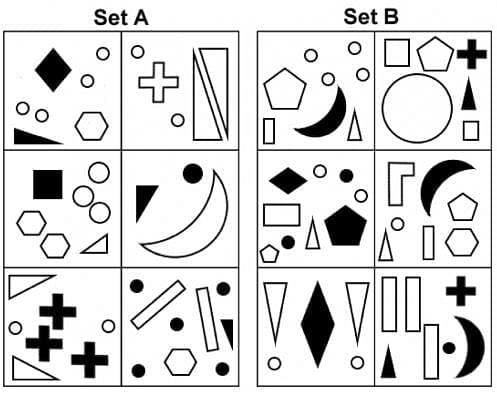 Q.
Q. 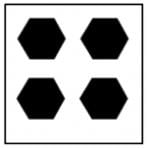
- a)Set A
- b)Set B
- c)Neither
Correct answer is option 'C'. Can you explain this answer?
Directions: you will be presented with two sets of shapes labelled “Set A” and “Set B”. You will be given a test shape and asked to decide whether the test shape belongs to Set A, Set B, or Neither.

Q. 

a)
Set A
b)
Set B
c)
Neither
|
|
Swati Sharma answered |
C – This contains none of the shapes relevant to either group.
Pattern: Members of Set A contain at least one right-angled triangle and at least one circle; members of Set B contain at least one isosceles triangle and at least one circle.
Method: This is hard to spot, and so a process of elimination may help. There aren’t enough obviously-large shapes for Size to be a factor, nor does Orientation or Position vary in a clear pattern. Counting the number of shapes in the simplest cases (middle-right for A, bottom-left for B) enables exclusion of pure Number, whilst Colour is also easily checked and dismissed. Focussing on the shapes in these simplest cases (top- and middle-right for A, bottom-left for B) should reveal the importance of circles and triangles.
Directions: you will be presented with two sets of shapes labelled “Set A” and “Set B”. You will be given a test shape and asked to decide whether the test shape belongs to Set A, Set B, or Neither.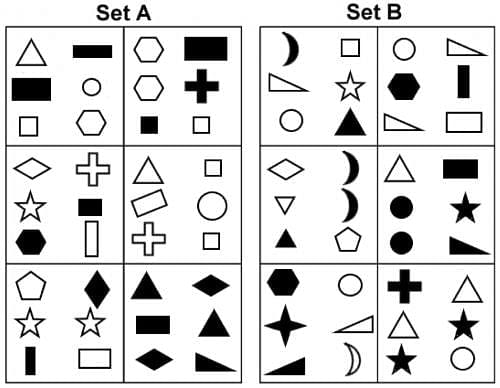 Q.
Q. 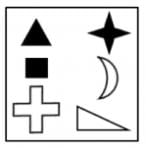
- a)Set A
- b)Set B
- c)Neither
Correct answer is option 'B'. Can you explain this answer?
Directions: you will be presented with two sets of shapes labelled “Set A” and “Set B”. You will be given a test shape and asked to decide whether the test shape belongs to Set A, Set B, or Neither.

Q. 

a)
Set A
b)
Set B
c)
Neither

|
Elite Coaching Classes answered |
Set B – This contains two triangles and one quadrilateral, meeting the requirements of Set B only.
Pattern: Members of both sets contain six elements whose colour, black or white, is irrelevant. Specifically, members of Set A contain three quadrilaterals (square/rectangle/diamond), whilst members of Set B contain two triangles (right-angled or isosceles).
Method: Colour can quickly be ruled out, e.g. by looking at the middle-right and bottom-right members of Set A. Checking a few boxes for the number of sides rules out this, too. It’s hard to find “simplest” cases in each set, but comparing within the sets helps – in A, there is no single common shape amongst the members (hexagons, crosses, stars or circles), but the abundance of squares, rectangles and diamonds should become apparent; likewise for triangles in B.
Directions: you will be presented with two sets of shapes labelled “Set A” and “Set B”. You will be given a test shape and asked to decide whether the test shape belongs to Set A, Set B, or Neither.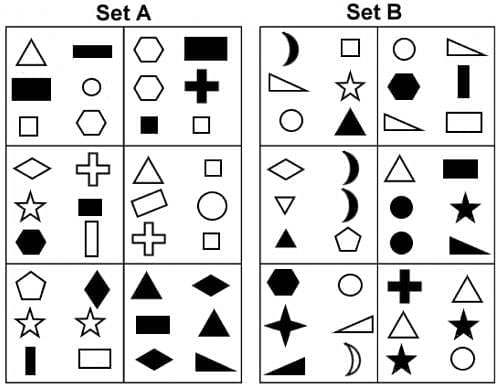 Q.
Q. 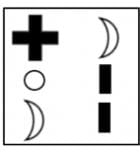
- a)Set A
- b)Set B
- c)Neither
Correct answer is option 'C'. Can you explain this answer?
Directions: you will be presented with two sets of shapes labelled “Set A” and “Set B”. You will be given a test shape and asked to decide whether the test shape belongs to Set A, Set B, or Neither.

Q. 

a)
Set A
b)
Set B
c)
Neither
|
|
Swati Sharma answered |
C – This contains two quadrilaterals and no triangles, meeting the requirements of neither set.
Pattern: Members of both sets contain six elements whose colour, black or white, is irrelevant. Specifically, members of Set A contain three quadrilaterals (square/rectangle/diamond), whilst members of Set B contain two triangles (right-angled or isosceles).
Method: Colour can quickly be ruled out, e.g. by looking at the middle-right and bottom-right members of Set A. Checking a few boxes for the number of sides rules out this, too. It’s hard to find “simplest” cases in each set, but comparing within the sets helps – in A, there is no single common shape amongst the members (hexagons, crosses, stars or circles), but the abundance of squares, rectangles and diamonds should become apparent; likewise for triangles in B.
Directions: you will be presented with two sets of shapes labelled “Set A” and “Set B”. You will be given a test shape and asked to decide whether the test shape belongs to Set A, Set B, or Neither.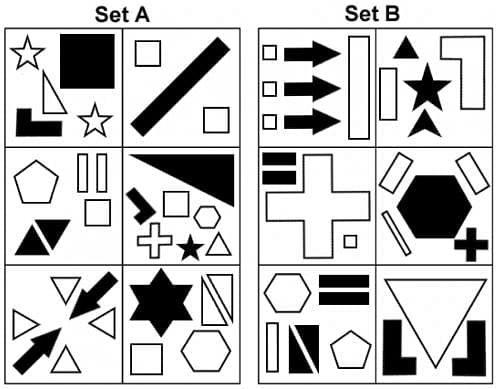 Q.
Q. 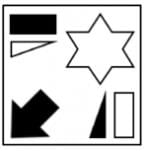
- a)Set A
- b)Set B
- c)Neither
Correct answer is option 'B'. Can you explain this answer?
Directions: you will be presented with two sets of shapes labelled “Set A” and “Set B”. You will be given a test shape and asked to decide whether the test shape belongs to Set A, Set B, or Neither.

Q. 

a)
Set A
b)
Set B
c)
Neither
|
|
Swati Sharma answered |
Set B 1 regular; 5 irregular.
Pattern: Members of both sets contain a mixture of regular and irregular shapes, but members of Set A contain more regular shapes than irregular; conversely, members of Set B contain more irregular shapes than regular.
Method: Many candidates would likely struggle with this tough pattern. The simplest cases to compare in Set A are the top-right (2 regular, 1 irregular) and bottom-left (4 regular, 2 irregular); in Set B, they are bottom-right (1 regular, 2 irregular) and middle-left (1 regular, 3 irregular). It’s another pattern where a process of elimination helps – Size is easily excluded (most boxes have no large elements), as are Orientation, simple Number and Colour, to start with.
Directions: you will be presented with two sets of shapes labelled “Set A” and “Set B”. You will be given a test shape and asked to decide whether the test shape belongs to Set A, Set B, or Neither.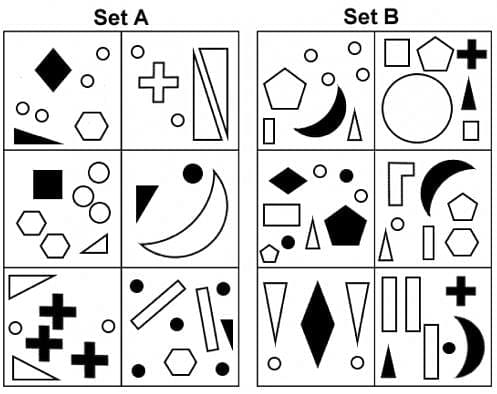 Q.
Q. 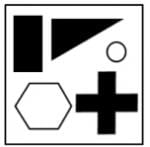
- a)Set A
- b)Set B
- c)Neither
Correct answer is option 'A'. Can you explain this answer?
Directions: you will be presented with two sets of shapes labelled “Set A” and “Set B”. You will be given a test shape and asked to decide whether the test shape belongs to Set A, Set B, or Neither.

Q. 

a)
Set A
b)
Set B
c)
Neither
|
|
Swati Sharma answered |
Set A – This contains a circle and a right-angled triangle, as well as no isosceles triangle.
Pattern: Members of Set A contain at least one right-angled triangle and at least one circle; members of Set B contain at least one isosceles triangle and at least one circle.
Method: This is hard to spot, and so a process of elimination may help. There aren’t enough obviously-large shapes for Size to be a factor, nor does Orientation or Position vary in a clear pattern. Counting the number of shapes in the simplest cases (middle-right for A, bottom-left for B) enables exclusion of pure Number, whilst Colour is also easily checked and dismissed. Focussing on the shapes in these simplest cases (top- and middle-right for A, bottom-left for B) should reveal the importance of circles and triangles.
Directions: you will be presented with two sets of shapes labelled “Set A” and “Set B”. You will be given a test shape and asked to decide whether the test shape belongs to Set A, Set B, or Neither.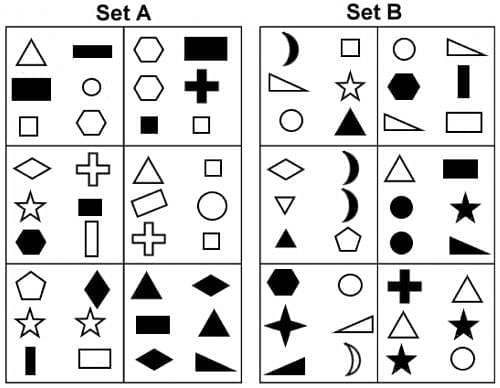 Q.
Q. 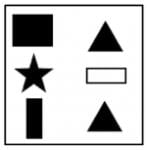
- a)Set A
- b)Set B
- c)Neither
Correct answer is option 'C'. Can you explain this answer?
Directions: you will be presented with two sets of shapes labelled “Set A” and “Set B”. You will be given a test shape and asked to decide whether the test shape belongs to Set A, Set B, or Neither.

Q. 

a)
Set A
b)
Set B
c)
Neither
|
|
Swati Sharma answered |
C – This contains both three quadrilaterals and two triangles, and so satisfies the requirements of both sets.
Pattern: Members of both sets contain six elements whose colour, black or white, is irrelevant. Specifically, members of Set A contain three quadrilaterals (square/rectangle/diamond), whilst members of Set B contain two triangles (right-angled or isosceles).
Method: Colour can quickly be ruled out, e.g. by looking at the middle-right and bottom-right members of Set A. Checking a few boxes for the number of sides rules out this, too. It’s hard to find “simplest” cases in each set, but comparing within the sets helps – in A, there is no single common shape amongst the members (hexagons, crosses, stars or circles), but the abundance of squares, rectangles and diamonds should become apparent; likewise for triangles in B.
Directions: you will be presented with two sets of shapes labelled “Set A” and “Set B”. You will be given a test shape and asked to decide whether the test shape belongs to Set A, Set B, or Neither.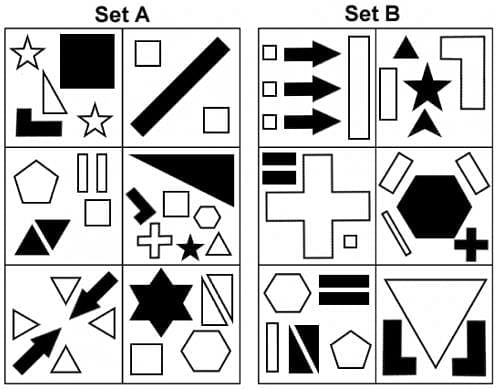 Q.
Q. 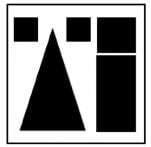
- a)Set A
- b)Set B
- c)Neither
Correct answer is option 'A'. Can you explain this answer?
Directions: you will be presented with two sets of shapes labelled “Set A” and “Set B”. You will be given a test shape and asked to decide whether the test shape belongs to Set A, Set B, or Neither.

Q. 

a)
Set A
b)
Set B
c)
Neither
|
|
Swati Sharma answered |
Set A 3 regular; 2 irregular.
Pattern: Members of both sets contain a mixture of regular and irregular shapes, but members of Set A contain more regular shapes than irregular; conversely, members of Set B contain more irregular shapes than regular.
Method: Many candidates would likely struggle with this tough pattern. The simplest cases to compare in Set A are the top-right (2 regular, 1 irregular) and bottom-left (4 regular, 2 irregular); in Set B, they are bottom-right (1 regular, 2 irregular) and middle-left (1 regular, 3 irregular). It’s another pattern where a process of elimination helps – Size is easily excluded (most boxes have no large elements), as are Orientation, simple Number and Colour, to start with.
Directions: you will be presented with two sets of shapes labelled “Set A” and “Set B”. You will be given a test shape and asked to decide whether the test shape belongs to Set A, Set B, or Neither.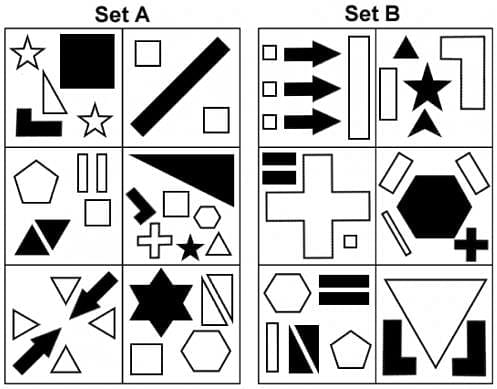 Q.
Q. 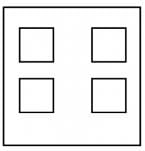
- a)Set A
- b)Set B
- c)Neither
Correct answer is option 'C'. Can you explain this answer?
Directions: you will be presented with two sets of shapes labelled “Set A” and “Set B”. You will be given a test shape and asked to decide whether the test shape belongs to Set A, Set B, or Neither.

Q. 

a)
Set A
b)
Set B
c)
Neither
|
|
Swati Sharma answered |
C 4 regular; 0 irregular – and members of both sets must contain a mixture of regular and irregular shapes.
Pattern: Members of both sets contain a mixture of regular and irregular shapes, but members of Set A contain more regular shapes than irregular; conversely, members of Set B contain more irregular shapes than regular.
Method: Many candidates would likely struggle with this tough pattern. The simplest cases to compare in Set A are the top-right (2 regular, 1 irregular) and bottom-left (4 regular, 2 irregular); in Set B, they are bottom-right (1 regular, 2 irregular) and middle-left (1 regular, 3 irregular). It’s another pattern where a process of elimination helps – Size is easily excluded (most boxes have no large elements), as are Orientation, simple Number and Colour, to start with.
Directions: you will be presented with two sets of shapes labelled “Set A” and “Set B”. You will be given a test shape and asked to decide whether the test shape belongs to Set A, Set B, or Neither.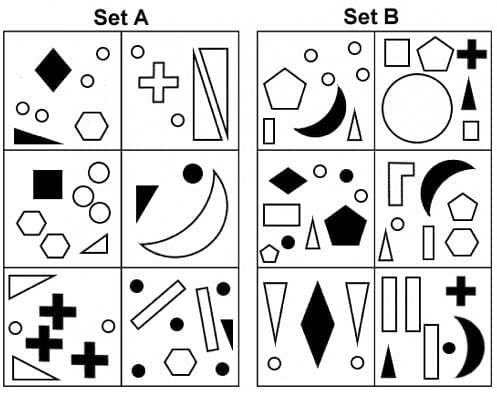 Q.
Q. 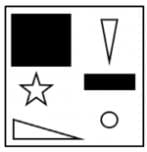
- a)Set A
- b)Set B
- c)Neither
Correct answer is option 'C'. Can you explain this answer?
Directions: you will be presented with two sets of shapes labelled “Set A” and “Set B”. You will be given a test shape and asked to decide whether the test shape belongs to Set A, Set B, or Neither.

Q. 

a)
Set A
b)
Set B
c)
Neither
|
|
Swati Sharma answered |
C – This contains a circle, but also both a right-angled triangle and an isosceles triangle.
Pattern: Members of Set A contain at least one right-angled triangle and at least one circle; members of Set B contain at least one isosceles triangle and at least one circle.
Method: This is hard to spot, and so a process of elimination may help. There aren’t enough obviously-large shapes for Size to be a factor, nor does Orientation or Position vary in a clear pattern. Counting the number of shapes in the simplest cases (middle-right for A, bottom-left for B) enables exclusion of pure Number, whilst Colour is also easily checked and dismissed. Focussing on the shapes in these simplest cases (top- and middle-right for A, bottom-left for B) should reveal the importance of circles and triangles.
Directions: you will be presented with two sets of shapes labelled “Set A” and “Set B”. You will be given a test shape and asked to decide whether the test shape belongs to Set A, Set B, or Neither.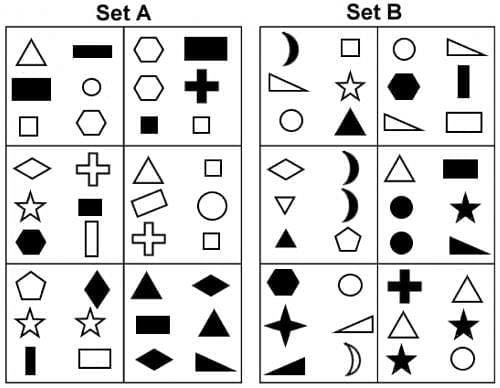 Q.
Q. 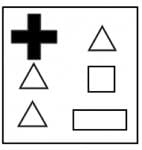
- a)Set A
- b)Set B
- c)Neither
Correct answer is option 'C'. Can you explain this answer?
Directions: you will be presented with two sets of shapes labelled “Set A” and “Set B”. You will be given a test shape and asked to decide whether the test shape belongs to Set A, Set B, or Neither.

Q. 

a)
Set A
b)
Set B
c)
Neither
|
|
Swati Sharma answered |
C – This contains two quadrilaterals and three triangles, meeting the requirements of neither set.
Pattern: Members of both sets contain six elements whose colour, black or white, is irrelevant. Specifically, members of Set A contain three quadrilaterals (square/rectangle/diamond), whilst members of Set B contain two triangles (right-angled or isosceles).
Method: Colour can quickly be ruled out, e.g. by looking at the middle-right and bottom-right members of Set A. Checking a few boxes for the number of sides rules out this, too. It’s hard to find “simplest” cases in each set, but comparing within the sets helps – in A, there is no single common shape amongst the members (hexagons, crosses, stars or circles), but the abundance of squares, rectangles and diamonds should become apparent; likewise for triangles in B.
Directions: you will be presented with two sets of shapes labelled “Set A” and “Set B”. You will be given a test shape and asked to decide whether the test shape belongs to Set A, Set B, or Neither.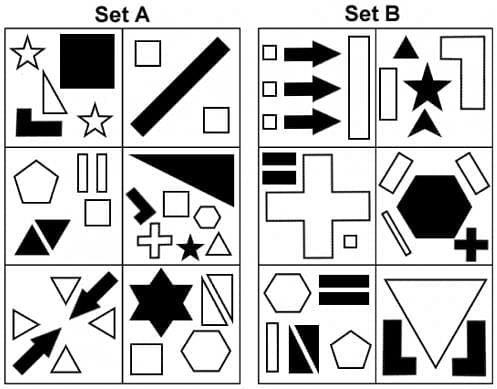 Q.
Q. 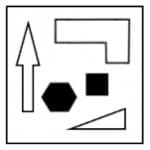
- a)Set A
- b)Set B
- c)Neither
Correct answer is option 'B'. Can you explain this answer?
Directions: you will be presented with two sets of shapes labelled “Set A” and “Set B”. You will be given a test shape and asked to decide whether the test shape belongs to Set A, Set B, or Neither.

Q. 

a)
Set A
b)
Set B
c)
Neither

|
Elite Coaching Classes answered |
Set B 2 regular; 3 irregular.
Pattern: Members of both sets contain a mixture of regular and irregular shapes, but members of Set A contain more regular shapes than irregular; conversely, members of Set B contain more irregular shapes than regular.
Method: Many candidates would likely struggle with this tough pattern. The simplest cases to compare in Set A are the top-right (2 regular, 1 irregular) and bottom-left (4 regular, 2 irregular); in Set B, they are bottom-right (1 regular, 2 irregular) and middle-left (1 regular, 3 irregular). It’s another pattern where a process of elimination helps – Size is easily excluded (most boxes have no large elements), as are Orientation, simple Number and Colour, to start with.
Directions: you will be presented with two sets of shapes labelled “Set A” and “Set B”. You will be given a test shape and asked to decide whether the test shape belongs to Set A, Set B, or Neither.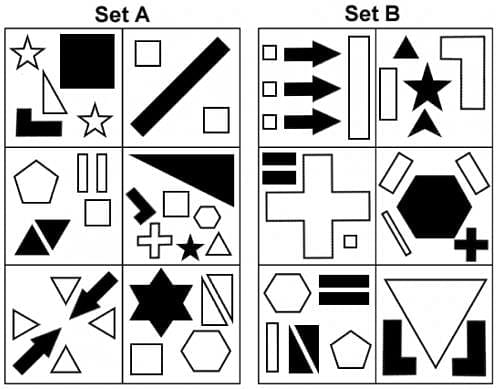 Q.
Q. 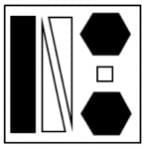
- a)Set A
- b)Set B
- c)Neither
Correct answer is option 'C'. Can you explain this answer?
Directions: you will be presented with two sets of shapes labelled “Set A” and “Set B”. You will be given a test shape and asked to decide whether the test shape belongs to Set A, Set B, or Neither.

Q. 

a)
Set A
b)
Set B
c)
Neither

|
Elite Coaching Classes answered |
C 3 regular; 3 irregular.
Pattern: Members of both sets contain a mixture of regular and irregular shapes, but members of Set A contain more regular shapes than irregular; conversely, members of Set B contain more irregular shapes than regular.
Method: Many candidates would likely struggle with this tough pattern. The simplest cases to compare in Set A are the top-right (2 regular, 1 irregular) and bottom-left (4 regular, 2 irregular); in Set B, they are bottom-right (1 regular, 2 irregular) and middle-left (1 regular, 3 irregular). It’s another pattern where a process of elimination helps – Size is easily excluded (most boxes have no large elements), as are Orientation, simple Number and Colour, to start with.
Chapter doubts & questions for Shape Patterns - Abstract Reasoning for UCAT 2025 is part of UCAT exam preparation. The chapters have been prepared according to the UCAT exam syllabus. The Chapter doubts & questions, notes, tests & MCQs are made for UCAT 2025 Exam. Find important definitions, questions, notes, meanings, examples, exercises, MCQs and online tests here.
Chapter doubts & questions of Shape Patterns - Abstract Reasoning for UCAT in English & Hindi are available as part of UCAT exam.
Download more important topics, notes, lectures and mock test series for UCAT Exam by signing up for free.
Abstract Reasoning for UCAT
5 videos|3 docs|4 tests
|
Signup to see your scores go up within 7 days!
Study with 1000+ FREE Docs, Videos & Tests
10M+ students study on EduRev

Contact Support
Our team is online on weekdays between 10 AM - 7 PM
Typical reply within 3 hours
|
Free Exam Preparation
at your Fingertips!
Access Free Study Material - Test Series, Structured Courses, Free Videos & Study Notes and Prepare for Your Exam With Ease

 Join the 10M+ students on EduRev
Join the 10M+ students on EduRev
|

|
Forgot Password
OR
Signup on EduRev and stay on top of your study goals
10M+ students crushing their study goals daily










